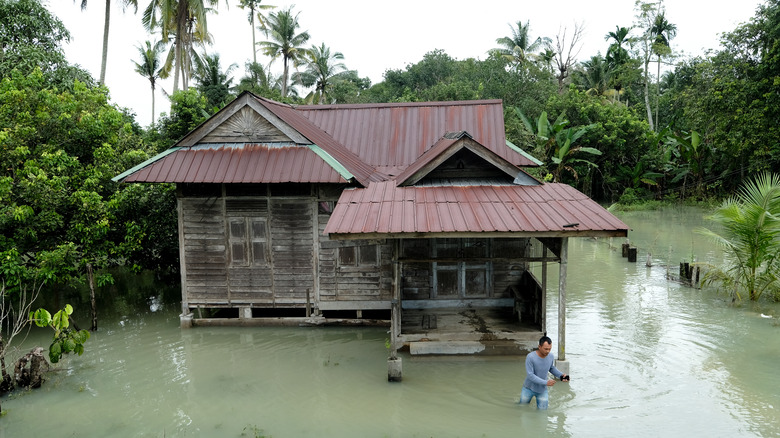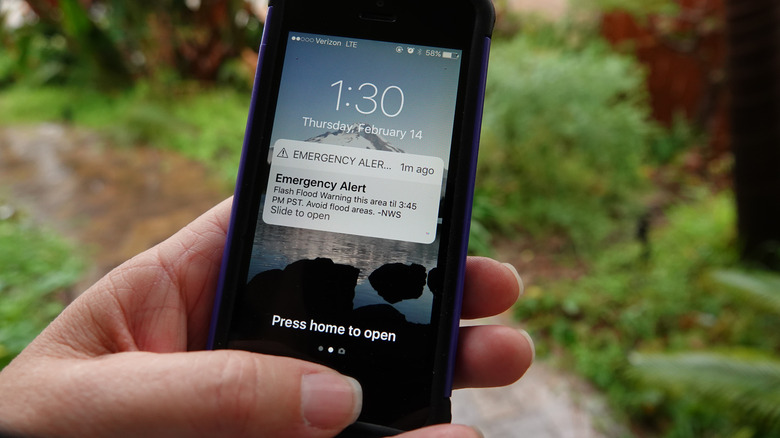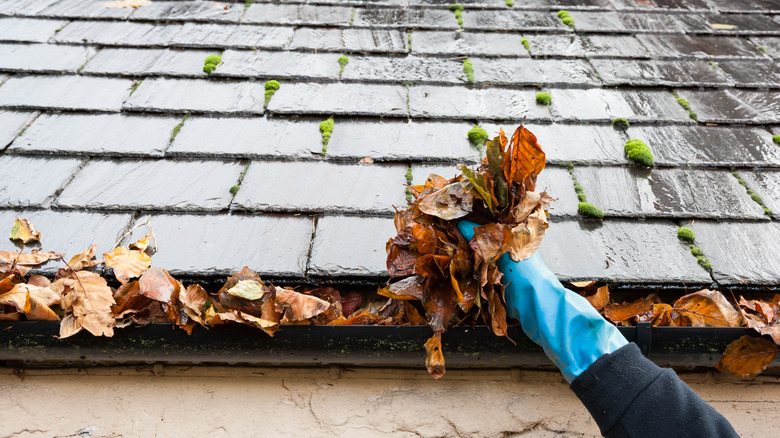3 Important Ways To Prepare Your Home For A Flash Flood Before It's Too Late
If you were wondering where to begin preparing your home for natural disasters, the World Health Organization (WHO) states that floods are the most common type of natural disaster, affecting more than 2 billion people between 1998 and 2017. According to The New York Times, climate change researchers expect flood events to get even flashier as the Earth's temperature increases. Per the NOAA National Severe Storms Laboratory, flash floods are the most dangerous when it comes to types of floods; thanks to the additional hazard, their eponymous speed adds to the destructive nature of rising waters.
As the National Safety Council advised, flash floods are possible at all times of the year in all kinds of environments. Urban areas are even more susceptible to flash flooding than many rural areas, as so much of the urban environment repels water. Flash flooding is, by its very nature, surprising and fast-moving, and its impact can be devastating on property. Preparedness is really the only solution to minimize the risks, as there won't be enough time to spare when disaster strikes. Continue reading to learn three simple steps you can take to ensure you and your home are best equipped to deal with the potential dangers of flash floods.
Collect past and present data
When you're dealing with a hazard that's characterized by speed, knowledge is a powerful tool. Understanding the hydrological profile of your property doesn't have to mean expensive surveys or even living there a long time — FEMA produces flood maps for the entire United States, and local authorities in your area may already have some pretty detailed drainage maps that you can get access to. Knowing your flood risk can help you take steps such as getting the right insurance, assembling emergency plans and kits, and building appropriate drainage systems on-site.
Once you have a concrete idea of your property's flood profile over the long term, it's time to add to that with info on flood risks for any given day. According to The Weather Channel, the easiest way to keep tabs on the danger of flash flooding in your area is to make sure that you're alerted if your local National Weather Station issues a flood warning. This is available through a variety of apps and websites, and exactly what that looks like can vary, depending on the local area. Having said that, most local authorities in flood-prone areas have some kind of solution for quickly alerting the population, so try and find yours so you can have up-to-date, accurate information if there is an elevated risk of flash floods.
Assemble a Disaster Supply Kit and Plan
Arming yourself with information is a sensible first step, but what are your next steps? It helps to have a plan. According to the CDC, having a Disaster Plan in place is one of the most important ways to protect your home and family in the case of floods. If you have found out your home's level of flood risk, you should also be able to locate somewhere nearby that is suitable high ground with lower flood risk that you can evacuate to in the event of a flood. Include this, a Family Communication Plan, and a Disaster Supply Kit in your Family Disaster Plan.
Depending on the official advice, you may need to evacuate quickly or stay put for a while. According to the National Weather Service, nearly half of all flood fatalities are vehicle-related, so make sure you are absolutely certain about whether to move or not and listen carefully to official advice. In either scenario, having a Disaster Supply Kit on hand will be helpful — this is why Habitat for Humanity recommends them for flood preparedness. Your Disaster Supply Kit should include a portable 'to-go' bag, ready in case of evacuation, and should be stocked enough to supply you well for a few days if you need to shelter in place at home.
Clean the gutters and check the sump
According to an essay appearing in Scientific American, flash flooding occurs when too much of the ground in an area is unable to absorb water, and then a lot more water is added to the area. The water rushes downhill over the surface until it can be absorbed, inundating low-lying areas. Priming your property to deal with flash floods then means primarily preparing the lowest parts of your home.
Firstly, check your gutters. They won't help if the flood comes at ground level, but as Risk Factor pointed out, it is possible to discourage rainwater from pooling around a building's foundation by removing debris from gutters and downspouts, and that's the name of the game. You won't be sorry your gutters are too clean!
If it seems inevitable that the lower reaches of your home will be flooded, consider installing a sump pump, and if you already have one, make sure it is working. Per State Farm, a sump pump is a small, below-basement pump that sends water that accumulates at the base of your home to a more acceptable location. It's worth installing backup power on these systems, as they may be the last line of defense between your home and the floodwaters.
If an entire river decides to run through your neighborhood, gutters and a sump pump won't stop it. But they certainly will limit damage, speed up recovery, and increase your resilience to lower-level flood events, so it's worth maintaining them.



